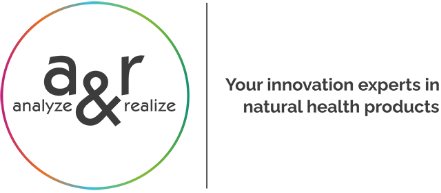Food enzymes are biocatalysts that make the processing of food ingredients, e.g. starch, economically viable but also allow for tremendous innovations in the nutrition sector, like alternative low-calorie sugars or prebiotics.
Many foods are produced with the help of enzymes, e.g. baking products, or starch-derived goods. Sometimes the enzymes themselves are used as food ingredients (e. g. papain, lactase) and sometimes as processing aids.
Food enzymes are generally processing aids and as such not clearly regulated in the EU. This means that enzymes used for the manufacture of foods require an authorization according to the common authorization procedure for food additives, food enzymes and food flavorings (Regulation (EU) 1331/2008). The specific requirements for food enzymes are laid down in Regulation (EU) 1332/2008.
Food enzymes can be extracted from natural sources like plants, animals, bacteria, or fungi, and are often obtained from genetically modified microorganisms.
The evolution of technologies for tailoring enzyme properties for specific purposes and for manufacturing them on a large scale in microorganisms has triggered – and driven – disruptive innovations in food manufacturing. Hence, food enzyme applications are often closely linked to novel food applications, and a missing enzyme authorization might slow down the authorization of a novel food.
But what does this mean for food enzymes?
In order to be used and or sold on the European market, enzymes have to be evaluated by EFSA to establish their safety and to be included in the Union List of food enzymes. This applies to all food enzymes, whether already established or new.
Many applications have already been submitted, and the publication of the Union list has been delayed to 2023/2024.
Currently, national legislation still applies for food enzymes, but the situation following the publication of the Union List remains unclear at the moment.
As there might be transitional measures for food enzyme applications submitted before the publication of the Union List, we recommend using this opportunity and preparing your food enzyme application now rather than wait for the official list.
What do you have to do in order to get your enzyme included into the Union list?
An application for the authorization of a food enzyme must provide a set of information characterizing the enzyme in question, along with its production process, intended uses, exposure, and its toxicological and allergenic potential.
For enzymes derived from microorganisms, the description of the microorganism used to produce the enzyme has to be provided, adding to the complexity of the application (e. g. inclusion and interpretation of WGS data, AMR gene information, or gDNA detection).
The applicant has to demonstrate that the enzyme in question is well understood, but also that substances present in the final enzyme preparation do not cause potentially toxic or harmful effects.
The extent of the necessary safety data depends on whether or not the enzyme and accompanying material is present in the final product.
How can you prepare?
The guidelines for food enzyme applications and microorganisms used for the production of food enzymes issued by EFSA are a good starting point.
Also, you should decide from the beginning how your enzyme is to be used (e.g. removal or presence in final food) and consider its source, as this will have a large impact on the application strategy and the required information.
But you are not alone. We have many years of experience in the food regulatory business and are happy to support you in all questions regarding food enzyme applications and development to provide you with a quick and efficient route to market for your products. To know more about our services, get in touch with us and join our upcoming seminar on food enzymes.
